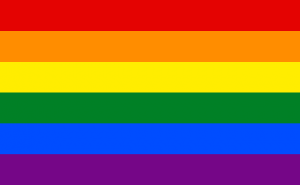
Being a new mother is both an exciting and challenging experience. One common issue that affects breastfeeding mothers is mastitis. The breast becomes inflamed and painful and it becomes difficult to breastfeed. In this post, we will discuss what mastitis is, and the role of women’s health physiotherapy and therapeutic ultrasound in treating mastitis and promoting postpartum breast care. At Penrith Pelvic Floor Physiotherapy we are pleased to offer all the treatments mentioned below.
What is Mastitis?
Mastitis is breast inflammation. It presents as a localised red patch on the breast that feels hard, painful, and warm. It may be associated with fever like symptoms- fatigue, chills and muscle aches.
One in 4 breastfeeding mums will have an episode of mastitis before their baby is 6 months old. Peak incidence occurs when the baby is 2-3 weeks’ old.
How does it happen?
The cause of inflammatory mastitis is thought to be milk stasis, i.e. breast milk stops moving through the milk ducts. This could happen because of compression from restrictive clothing, or compression from falling asleep with something pressing on your breast, such as your baby, or your arm. Blockage can also happen if there is injury to the tissue, for example from aggressive massage or a poor breast pump fit. Poor milk drainage can also contribute, for example because your baby has a poor latch or because you have sore nipples, or because you have an oversupply of milk.
As back pressure builds up in the ducts, milk will be forced through the duct walls, leaking into the surrounding tissue, causing an inflammatory reaction. This inflamed tissue will put pressure back onto the ducts, narrowing them so that milk flow becomes further restricted.
Should I take antibiotics?
In Australia, antibiotics are prescribed to about 80% of breastfeeding mums, whereas in Europe, the rate of antibiotic prescription is only 15-30%. Interestingly, mastitis only leads to abscess formation in 1-3% of cases, even in countries where antibiotic use is low. The same type and number of bacteria are found in the milk of well breastfeeding women and women with mastitis, suggesting that routine antibiotic use is not necessary.
Many women are reluctant to take antibiotics because they can cause thrush, and because baby is likely to get an upset tummy. The best way to determine which women may need antibiotics is daily follow-up to measure the change in symptoms.
What can I do to reduce breast inflammation?
The most recent evidence suggests that frequent small feeds are best. Aim for a dozen small feeds in 24 hrs. Big feeds, or over-pumping, where the breast is ‘completely drained’ are no longer encouraged as this may lead to an oversupply which will make it even harder to drain the inflamed breast segment next time. There is no evidence that placing the baby’s nose or chin next to the lump will drain the breast better. Dangling the breast to achieve such a feeding position may even make things worse. And now is not a good time to wean!
Avoid compression on the breast, from clothing seams, a tight bra or sleeping on your arm. Don’t massage the lump, or squeeze your breast with your thumb while you feed.
Avoid traction on the breast, from firm massage, from using a hanging position to feed, or from not wearing a bra. Kinesiotape may help reduce the drag on the affected part of the breast. A lactation consultant or physiotherapist can also provide useful information and advice regarding the fit and hold of your baby onto your breast and the fitting of your bra.
Massaging the breast using a flat palm, directing the strokes up towards the armpit, may be helpful. Do not dig into any lumps. Do not massage with fingertips unless you can discipline yourself to be very gentle. You do not want to damage the tissue further!
It might help to gently move the whole arm away from the body in different directions and turn and bend the trunk to avoid secondary symptoms such as mid back and neck stiffness.
Use warm or cold compresses according to what feels best for you.
Rest is important, and ibuprofen could be used just before a feed if you know that is safe for you.
Reduce your stress levels where you can. Stress adds to inflammation!
Watch this video from physiotherapist Emma Heron, which explains 10 things you can do to reduce breast inflammation.
Therapeutic Ultrasound –
An Effective Drug-Free Treatment for Mastitis
Therapeutic ultrasound is a quick and painless treatment that is expected to improve breast inflammation in just 1-3 sessions over consecutive days. Ultrasound has been shown to break down protective biofilms around bacteria. The ultrasound waves also provide a micro-massage that increases cell wall permeability so that inflammatory products get drawn into the lymphatic vessels and transported away.
A physiotherapy study is currently underway at Monash Uni to see if this is true for mastitis (www.ultrasoundtreatmentformastitis.com).
It is important to start ultrasound treatment at the first sign of redness or lumps in your breast tissue that don’t resolve after a feed. We will make time for you to be seen by one of our women’s heath physios on the same day that you call us.
We will recommend you see your GP if your symptoms have not improved after 3 sessions over 3 consecutive days.
Support to help you keep breastfeeding
Women who have successfully breastfed are going to be healthier as they age. They have lower rates of osteoporosis, breast cancer, ovarian cancer, diabetes, and obesity. The World Health Organisation considers breastfeeding to be one of the most effective ways to ensure child health and survival. Breastfed babies are less likely to become overweight and obese, and are less likely to develop diabetes. Breastmilk is clean, safe, cheap, and contains antibodies that protect your baby from childhood illnesses. Unfortunately, suffering from mastitis is one of the leading reasons women cease breastfeeding. We hope we can support you to continue your breastfeeding journey!
Conclusion
Mastitis can be a painful and uncomfortable condition for breastfeeding mothers, but with the right care and management, it can be effectively treated. Women’s health physiotherapy can be an essential component of mastitis management, providing education, manual therapy, and exercises to help mothers recover and prevent the condition from recurring.
By following proper postpartum breast care tips, mothers can help maintain their breast health and ensure the best possible outcome for themselves and their babies. Book online today and one of our Women’s Health Physiotherapists can help you through this challenging time.







